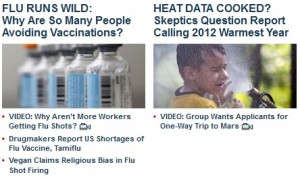David Farrar (among others) has written about a recent Coroner’s recommendation that high-visibility clothing should be compulsory for cyclists. As he notes, ” if you are cycling at night you are a special sort of moron if you do not wear hi-vis gear”, but he rightly points out that isn’t the whole issue.
It’s easy to analyse a proposed law as if the only changes that result are those the law intends: everyone will cycle the same way, but they will all be wearing lurid chartreuse studded with flashing lights and will live happily ever after. But safety laws, like other public-health interventions, need to be assessed on what will actually happen.
Bicycle helmet laws are a standard example. There is overwhelming evidence that wearing a bicycle helmet reduces the risk of brain injury, but there’s also pretty good evidence that requiring bicycle helmets reduces cycling. Reducing the number of cyclists is bad from an individual-health point of view and also makes cycling less safe for those who remain. It’s not obvious how to optimise this tradeoff, but my guess based on no evidence is that pro-helmet propaganda might be better than helmet laws.
Another example was a proposal by some US airlines to require small children to have their own seat rather than flying in a parent’s lap. It’s clear that having their own seat is safer, but also much more expensive. If any noticeable fraction of these families ended up driving rather than flying because of the extra cost, the extra deaths on the road would far outweigh those saved in the air.
It’s hard to predict the exact side-effects of a law, but that doesn’t mean they can be ignored any more than the exact side-effects of new medications can be ignored. The problem is that no-one will admit they don’t know the effects of a proposed law. It took us decades to persuade physicians that they don’t magically know the effects of new treatments; let’s hope it doesn’t take much longer in the policy world.
[PS: yes, I do wear a helmet when cycling, except in the Netherlands, where bikes rule]
